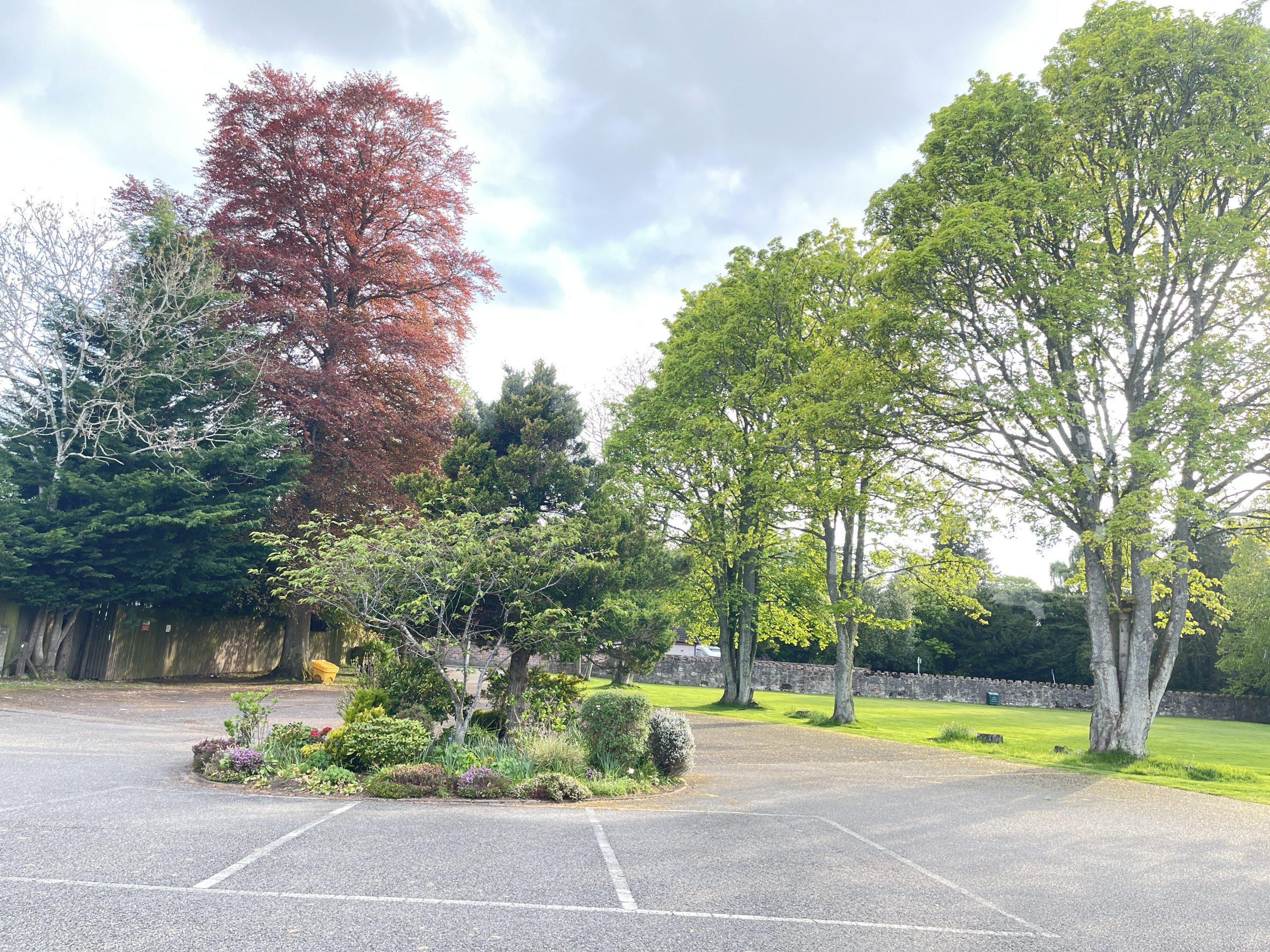
St Ninian’s was rebuilt in its present form in 1977, but it was nearly two decades earlier, in 1959, that the growth in the Catholic population of Inverness persuaded Bishop Walsh that a second church was needed to serve their needs.
The original St Ninian’s, built in 1960, was only the second Catholic church built in Inverness since the Reformation- St Mary’s, Huntly Street, built in 1837, was the first. Before St Mary’s, Catholics used a room in Margaret Street, pithily described at the time as “the place where Lord Lovat and the tinkers worshipped”. This room survived looting during the “No Popery” riot of 1829, when feelings ran high as a result of the Catholic Emancipation Bill: an effigy of the MP for Inverness-shire, Charles Grant – a supporter of the Bill – was burnt and the windows of the Caledonian Hotel, where he was staying, were smashed. Although of relatively recent origin, St Ninian’s is linked – through its site – to those much earlier days. In 1845, soon after St Mary’s was built, Franciscan nuns came to Inverness from their Mother House in Glasgow. They were first based in King Street, and then moved to a house adjoining the church in Huntly Street. The Convent School they ran acquired a high reputation and attracted boarders from all over the country.
When, after more than 80 years of good work in teaching and among the poor of Inverness, the Franciscan sisters were recalled to Glasgow in 1935, their place was taken by the Sisters of Notre Dame, who reopened the Convent School, moving it to Huntly Lodge, on the corner of Culduthel Road and Southside Road. They also owned the house next door, Hill Park, a handsome three-storey building standing in its own grounds – the site of the present St Ninian’s.
Hill Park was at first let to a Mr Kenneth Chisholm-Pant, but was later used as a hostel for the convent, serving Catholic schoolgirls from outside Inverness who attended Inverness Royal Academy and Inverness High School. (On an ecumenical note, the clerical associations of Hill Park go back further – in 1876, it was occupied by one Reverend Mr D.R. Macdonald, whose neighbour in Hedgefield House was the Right Reverend Bishop Eden.) In 1953, the Sisters of Notre Dame handed over to nuns of the Order of La Sagesse, or the Daughters of Wisdom, who continued to run the school and the hostel. Then on 12 June 1959 a disastrous fire completely destroyed Hill Park. A nun, Sister Rose, was injured in the blaze, as was one of the residents, Chrissie Buchanan (13) of Barra. The contemporary account from the Inverness Courier paints a vivid picture of an escape that is not without its heroic qualities:
“[Sister Rose] was awakened by the fire and found the way downstairs to the telephone barred by flames. Assisted by some schoolgirls, she immediately set about tying sheets together to make a rope, then started to climb down it from the top floor, 30 feet up. When only a few feet down, however, she lost her grip and fell to the ground, breaking her right shoulder bone. After climbing out of a top storey window, Chrissie Buchanan (13), a schoolgirl from Castlebay, Barra, missed her grasp on a ronepipe and fell 30 feet. She sustained a compound fracture of her left leg, and both she and Sister Rose were taken to Raigmore Hospital. Miss Edna Walton, Oban, an Inverness High School teacher, led the seven other girls in residence to safety.” The remains of Hill Park form the foundations of the present-day St Ninian’s Altar
The plans for the first St Ninian’s were submitted to the Dean of Guild Court in Inverness in October 1959 and approved in November. The estimated cost was £6000. The church was opened in 1960 and the first parish priest was Fr. George McCurrach. The church served the East of Inverness well for a number of years, but as the town expanded under the influence of industrial development – principally North Sea oil – the Catholic population increased in proportion, and it soon became clear that the existing church building was too small to serve them.
The present St Ninian’s was conceived and planned in 1976, to be built at an estimated cost of £56,000. The building incorporates the basement of the original church, which now serves as a hall for various functions. The design of the new St Ninian’s reflects the thinking of the Second Vatican Council, with the tabernacle separate from the centrally situated altar, which provides the focus for the congregation seated around it on three sides. In the original design there was a Blessed Sacrament chapel behind the altar, to the left as you look at it, but that has now been converted to a sacristy. The extent to which the new building enlarges on the old can be seen in the Nave and the East transept, which lie outside the boundaries of the old church, defined by the altar area and the West transept.
Father McCurrach was succeeded as Parish Priest by Fr. Bernard Macdonald (1979-1989) who gave way to Fr. Alistair Doyle (1989-1995). When Fr. Doyle moved to Elgin, the Parish was run from St Mary’s, with Fr. Robert Macdonald (Fr. Bernard’s brother) as Parish Priest, (1995-98) assisted in turn by Fr. Gerry Livingstone (1995-97) and Fr. Stuart Chalmers (1997-98). Fr. Chalmers moved to Stonehaven and St. Ninian’s joined with Culloden Parish under the care of Canon Peter Barry. Then in 2008 Canon Peter Barry moved to Aberdeen and Fr. Chalmers returned to take charge of St Ninian’s. In 2012, Fr. Chalmers was appointed Vicar General and moved to Aberdeen and Fr. John Allen came south from St. Anne’s, Thurso. In November 2022, Fr. John Allen retired and the Bishop Appointed Fr. Dominic Nwaigwe as the Parish Administrator.

 using WordPress and
using WordPress and